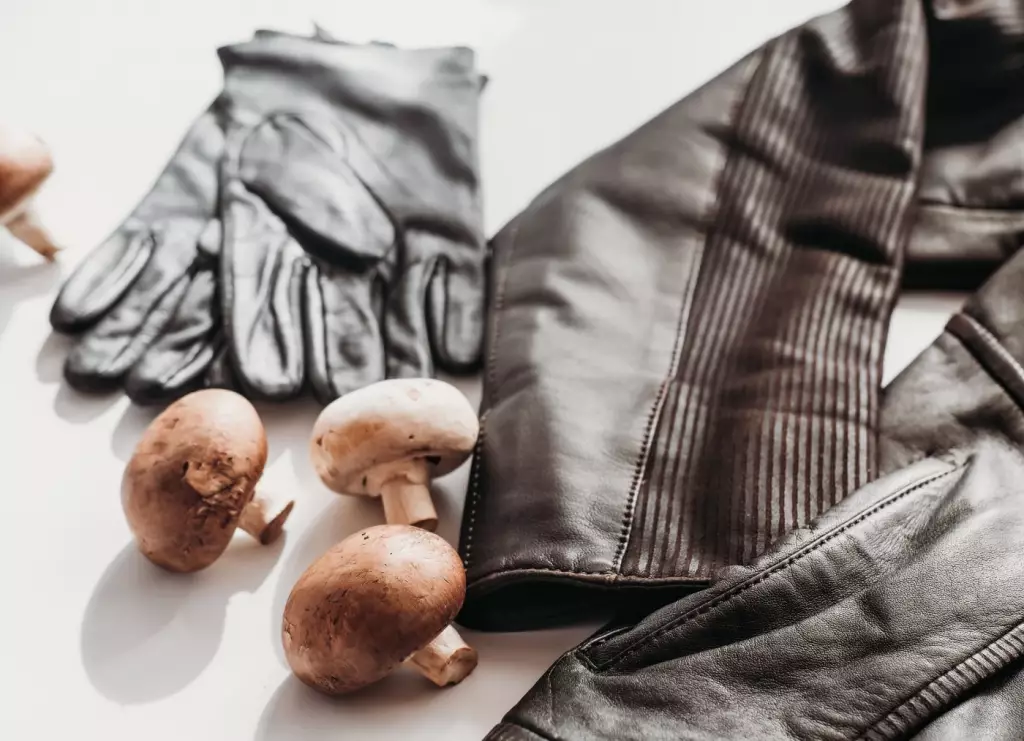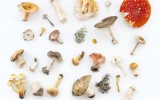Low Tech Mushroom Farming: What You'll Make and Need
Did you know that you can grow mushrooms at home with low-tech mushroom farming? You can do it with minimal technology, a few essential items, and some patience. In this guide, we’ll show you what you’ll need to start your mushroom farm and what you’ll make with it.
In low-tech mushroom farming, you’ll need mushroom spawn, substrate, containers, ventilation, a humid environment, and a light source. You can run a farm in your home or backyard if you have a sterilizer, a humidifier, a thermometer, a hygrometer, gloves, masks, and cleaning supplies that can cost from $151 to $323.
Some common methods of low-tech mushroom farming include the "log method" and the "straw method." Below, you'll learn more about these methods, how this type of farming can be low-cost yet sustainable and organic, and the seven steps to growing low-tech mushrooms.
Summary
- You can use simple materials such as straw, cardboard, and other organic materials in a low-tech mushroom farm.
- Low-tech mushroom farming requires minimal equipment and investment, uses recycled materials, and does not use synthetic fertilizers.
- This type of farming produces local and fresh yields that are healthy and nutritious.
- Some challenges of low-tech farming include limitations on scale, control over growing conditions, and vulnerability to contamination.

On this page:
What You'll Need for Low-Tech Mushroom Farming
Here's a table listing the essential things you'll need to start producing those mushrooms that are a good source of protein, vitamins, minerals, and antioxidants:
| Things You'll Need for a Low-Tech Mushroom Farm | What to Do or How to Achieve These Things |
|---|---|
| Mushroom spores or spawn | Purchase mushroom spores, or spawn, from a variety of sources online or at your local gardening store; or learn how to make your own spawn by growing mycelium on a nutrient-rich substrate |
| Substrate for the mushroom | Choose a substrate such as straw, sawdust, coffee grounds, and even old books; and sterilize or pasteurize your substrate before adding spores or spawning |
| Containers for your mushrooms | Look for containers such as plastic bags, cardboard boxes, or even plastic buckets; that should be able to hold your substrate and allow air to circulate |
| Well-ventilated area | Provide your mushrooms fresh air to grow; create ventilation in your container either by poking holes in a plastic bag or using a fan to circulate air |
| Humid environment | Keep the substrate moist either by misting the substrate with water or placing a humidifier near your containers |
| Light sources for the mushrooms | Mushrooms don't need direct sunlight, but they do need some light to grow; use a low-wattage bulb or natural light from a window |
Low-tech mushroom farming can produce a variety of edible mushrooms, such as shiitake, oyster, and button mushrooms. These mushrooms are not only delicious but also have several health benefits. They are low in calories and fat, making them a great addition to many dishes around the world, and they can be sold for profit, making low-tech mushroom farming a potential source of income.
Here's a short list of the basic items you'll need for low-tech farming, along with their cost estimates.
| Start-Up Costs of a Low-Tech Mushroom Farm | Estimated Cost |
|---|---|
| Spawn (mushroom seeds) | $20-$50 per pound |
| Substrate (growing medium) | $0.50-$1 per pound |
| Containers | $0.50-$2 per container |
| Sterilization equipment | $50-$100 (if using the straw method) |
| Humidifier | $20-$50 |
| Thermometer and hygrometer | $10-$20 |
| Other materials (gloves, masks, and cleaning supplies) | $50-$100 |
| Total investment cost | $151 to $323 |
Mushroom farming can be done on a small scale with minimal equipment and investment. You can create a low-tech mushroom farm in your home or backyard with the basic supplies listed above. Depending on the type of mushroom you choose to grow, you can expect to see harvests within a few weeks to a few months.
Low-tech mushroom farming grows mushrooms using simple and inexpensive methods and equipment, without relying on high-tech or advanced technology. This type of farming often involves using readily available materials such as straw, sawdust, and other organic materials as a substrate for growing mushrooms.
Some common methods of low-tech mushroom farming include the "log method," where mushroom spores are injected into logs, and the "straw method," where straw is sterilized and inoculated with mushroom spores.
You'll need to do manual labor and pay attention to detail, such as proper sterilization or pasteurization of the substrate, maintaining proper humidity levels, and providing adequate ventilation and lighting for the mushrooms to grow.
This type of farming is a sustainable and affordable alternative to high-tech mushroom farming methods, making it accessible to anyone interested in growing mushrooms for personal consumption or small-scale commercial use.

Start Your Own Low-Tech Mushroom Farm
Below are the steps to get you started on enjoying fresh, delicious mushrooms all year.
1. Choose your mushroom species
Different mushroom species require different growing conditions. Some popular species for low-tech farming include oyster mushrooms, shiitake mushrooms, and button mushrooms. Do some research on the specific species you want to grow to understand their growth requirements.
2. Gather your materials
You'll need some basic materials to get started, such as mushroom spawn (the mycelium that will grow into mushrooms), a growing substrate (such as straw or sawdust), containers for growing (such as plastic bags or buckets), and a space to grow (such as a garage or closet).
3. Prepare your substrate
Depending on your mushroom species, you'll need to prepare your substrate in different ways. For example, oyster mushrooms can be grown on straw) that has been pasteurized with boiling water. Shiitake mushrooms can be grown on logs that have been soaked and drilled with holes. Follow the instructions for your specific species carefully.
4. Inoculate your substrate with spawn
Once your substrate is ready, you can inoculate it with mushroom spawn. This can be done by mixing the spawn into the substrate or by placing the spawn on top of the substrate and covering it with a layer of soil or vermiculite. Again, follow the instructions for your specific species carefully.
5. Incubate your mushrooms
Once your substrate is inoculated, it will need to be kept in a warm, dark place to allow the mycelium to grow. Depending on the species, this can take anywhere from a few days to a few weeks.
6. Initiate fruiting time
After the mycelium has fully colonized the substrate, you can initiate fruiting by exposing the substrate to light and fresh air. This can be done by cutting holes in your growing containers or by transferring your substrate to a fruiting chamber.
7. Harvest your mushrooms
Once your mushrooms have started to grow, you can harvest them by cutting or pulling them off the substrate. Be sure to harvest them before they release their spores, as this can affect the flavor and texture of the mushrooms.

6 Benefits of Low-Tech Mushroom Farming
-
Low cost: Compared to high-tech commercial mushroom farming, low-tech mushroom farming requires minimal equipment and investment. This makes it an accessible option for those with limited resources.
-
Sustainable: Low-tech mushroom farming can be done using recycled or repurposed materials, such as straw, sawdust, and cardboard. This reduces waste and promotes sustainability.
-
Provides a nutritious harvest: Mushrooms are a good source of protein, vitamins, and minerals. Growing your own mushrooms ensures that you have access to fresh, nutritious produce.
-
Organic: Low-tech mushroom farming can be done without the use of synthetic fertilizers, pesticides, or herbicides, making it an organic and natural option.
-
Fun and educational: Low-tech mushroom farming can be a fun and educational activity for individuals and families. It provides a hands-on opportunity to learn about fungi and the natural world.
-
Produces local and fresh yields: When you grow your own mushrooms, you can enjoy local, fresh produce that hasn't been transported long distances. This reduces your carbon footprint and supports local food systems.

A few challenges of low-tech mushroom farming
-
Has a limited scale: Low-tech mushroom farming is typically done on a small scale, which limits the number of mushrooms that can be produced. This may not be sufficient for commercial purposes.
-
Vulnerable to contamination: Without the use of advanced equipment and sterile environments, low-tech mushroom farming is vulnerable to contamination by competing fungi or bacteria, which can ruin the crop.
-
Limited control over growing conditions: Low-tech mushroom farming relies on natural environmental conditions such as temperature, humidity, and light, which can be difficult to control. This can affect the growth rate and yield of the mushrooms.
-
Time-consuming: Low-tech mushroom farming can be a time-consuming process, requiring several weeks to several months for the mycelium to fully colonize the substrate and produce fruiting bodies.
-
Seasonal: Some mushroom species have specific growing seasons and may be difficult to grow year-round in certain climates. This may limit the availability of fresh mushrooms.
-
Needs knowledge and skill: Low-tech mushroom farming requires knowledge and skill to achieve good yields and avoid contamination. A learning curve may be required to achieve consistent success.



